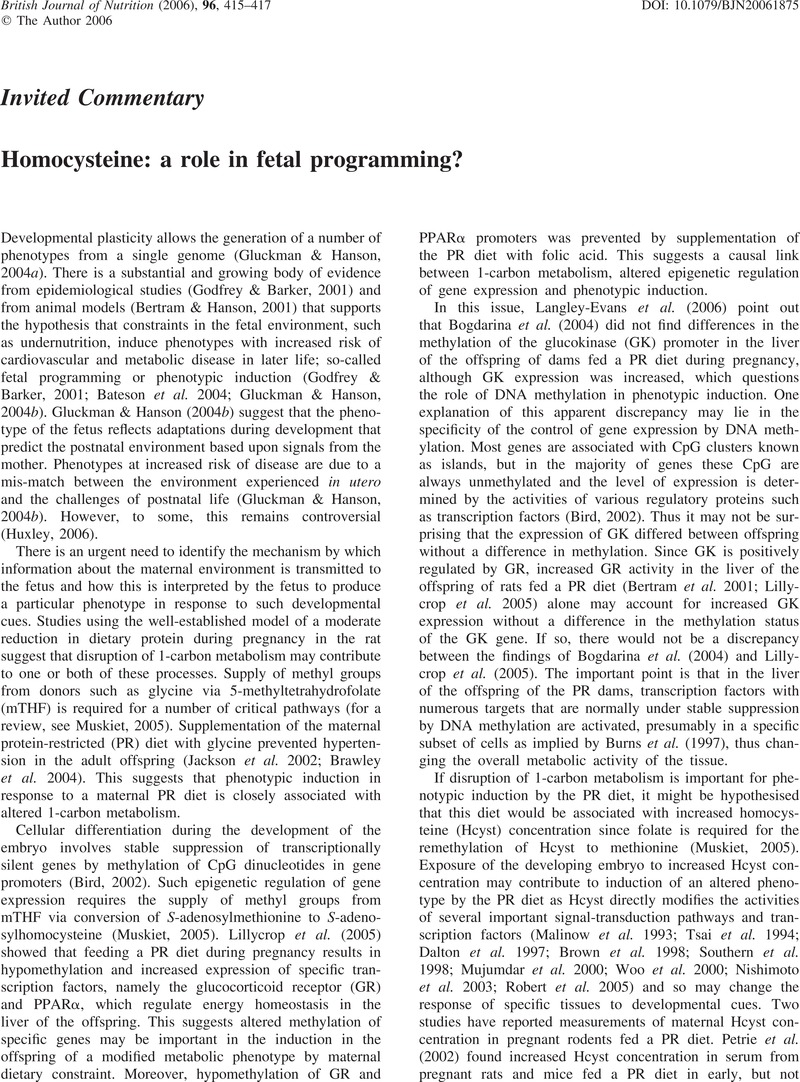Crossref Citations
This article has been cited by the following publications. This list is generated based on data provided by Crossref.
James, S. Jill
Melnyk, Stepan
Jernigan, Stefanie
Pavliv, Oleksandra
Trusty, Timothy
Lehman, Sara
Seidel, Lisa
Gaylor, David W.
and
Cleves, Mario A.
2010.
A functional polymorphism in the reduced folate carrier gene and DNA hypomethylation in mothers of children with autism.
American Journal of Medical Genetics Part B: Neuropsychiatric Genetics,
Vol. 153B,
Issue. 6,
p.
1209.
Haavik, Jan
Halm⊘y, Anne
Hegvik, Tor-Arne
and
Johansson, Stefan
2011.
Maternal Genotypes As Predictors of Offspring Mental Health: the Next Frontier of Genomic Medicine?.
Future Neurology,
Vol. 6,
Issue. 6,
p.
731.
Hure, Alexis J.
Collins, Clare E.
and
Smith, Roger
2012.
A Longitudinal Study of Maternal Folate and Vitamin B12 Status in Pregnancy and Postpartum, with the Same Infant Markers at 6 Months of Age.
Maternal and Child Health Journal,
Vol. 16,
Issue. 4,
p.
792.
Owen, Manon D.
Baker, Bernadette C.
Scott, Eleanor M.
and
Forbes, Karen
2021.
Interaction between Metformin, Folate and Vitamin B12 and the Potential Impact on Fetal Growth and Long-Term Metabolic Health in Diabetic Pregnancies.
International Journal of Molecular Sciences,
Vol. 22,
Issue. 11,
p.
5759.


